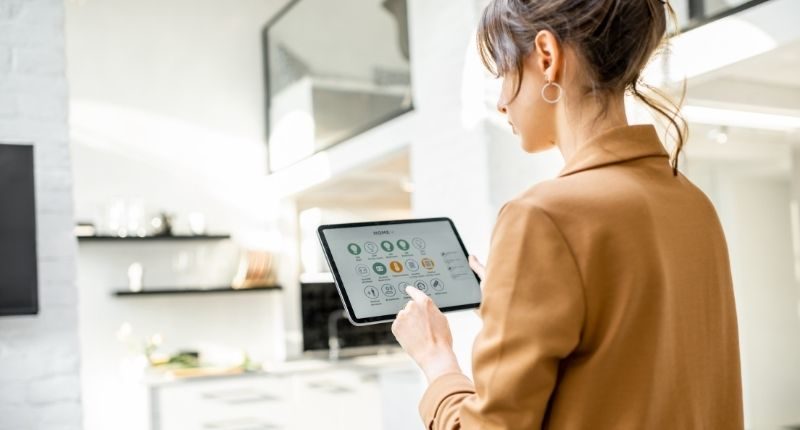
- Full home automation has not reached its full potential to improve lifestyles
- Technology critical to reducing energy use as 2050 net zero target looms
- Opportune time to consider smart alternatives with building and renovation boom
Creating “smarter” homes with the latest in automated home technologies is the key to reducing homeowners’ energy use, according to electrical expert Chris Kerr of Clipsal.
Mr Kerr believes automated home systems could be the answer to shrinking the carbon footprints of existing and future Australian homes.
Home automation not yet reaching its potential
However, Mr Kerr who is Clipsal’s Vice President of Home & Distribution, said Australia’s average smart homes have not yet lived up to their potential in technology connectivity.
He emphasised that home automation is the solution to empowering homeowners to reduce their energy use, by providing understanding and control, but this technology is underutilised.
Australians are taking steps in the right direction to full home automation, however are mostly driven by lifestyle benefits rather than a green attitude.
“It’s no surprise that smart speakers in particular, are driving home automation adoption with 26% of Australians owning a Google Nest, Amazon Alexa, or similar product, and accounting for a 53% increase year on year.”
Chris Kerr, Clipsal by Schneider Electric
While Mr Kerr acknowledges the usefulness of these products, he said they fall short of offering full automation by excluding lighting and air conditioning connectivity and are quick to become a gimmick.
He added that these devices could play a role in the solution if integrated with a more comprehensive automation system, but have their limitations on their own.
“It is important that affordable and accessible technologies that help visualise energy usage and creation enter the consumer market.

“By educating consumers about the current and future benefits of these devices, such as connecting solar panels, photovoltaic batteries, and electric vehicle chargers, whole home automation will become more appealing to the everyday Australian – helping us create ‘greener’ homes across the country,” he said.
Home technologies have been present in the luxury homes space for years, and now mass market adoption is seeing more affordable systems such as the Clipsal Wiser Smart Home enter the market.
Inexpensive options afford average Australians the power to control everything from lighting to window coverings from an app and assist electricians in explaining to clients the capabilities of smart homes.
A piece in the puzzle to a greener future
In conjunction with smart home technology benefitting the occupant’s lifestyle, the technology also has the potential to strengthen the nation’s path towards a carbon-neutral future.
Following Scott Morrison’s announcement in October of a global 2050 net zero target, the Property Council declared the property industry critical in achieving this goal.
Australia has since seen a combined effort from businesses and individuals alike to implement sustainable initiatives and reduce their carbon footprint.
“While this goal is more targeted globally towards corporations and large-scale buildings, residential smart homes will be key to achieving this.”
Chris Kerr, Clipsal by Schneider Electric
Mr Kerr added that a large part in transitioning from fossil fuels to a net zero outlook will rely heavily on renewable resources, which can significantly reduce a household’s energy consumption.
“In fact, renewable energy and energy efficiency measures have the potential to achieve up to 90% of the required carbon reductions,” said Mr Kerr.
Building and renovation boom creates an opportune time
According to Mr Kerr, Australians are currently spending a combined $1billion on home renovations per month.
Although improved systems have made the installation process of home technologies easier, the renovation boom is timely for Australians to consider smarter alternatives.
Mr Kerr added that this greener attitude should also extend to those with plans in the works to build a new home.
“Industry figures estimate that 130,000 new detached homes will be built in 2021.
“If each of these properties harnessed smart technology, Australia would see a dramatic reduction in household energy consumption rates per year,” Mr Kerr said.
While home automation may not have been fully harnessed yet by Australians, the time has never been riper as technologies become more affordable and a climate crisis plays on minds.
“They can choose what to automate as their needs change via new affordable, scalable systems to create better lifestyles for themselves and a greener, carbon-neutral future for all,” Mr Kerr concluded.







